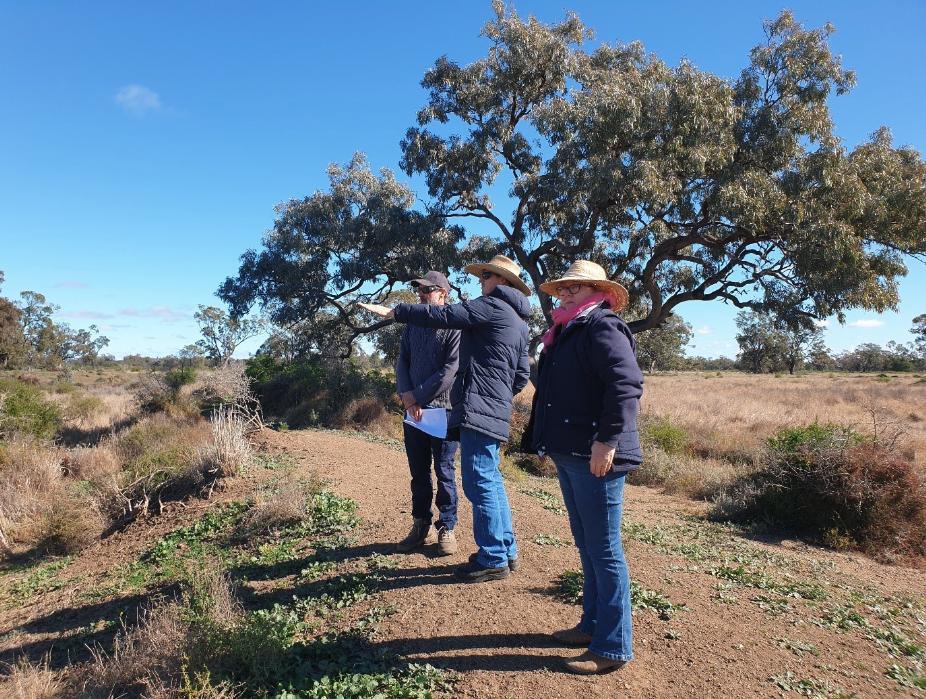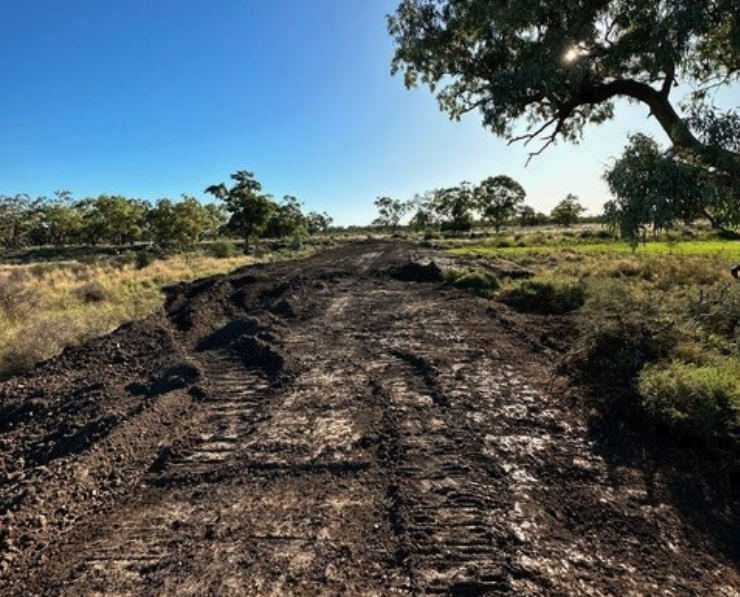Seeing a multigenerational family farm through fresh eyes.
Recently Mulloon Institute Landscape Planner Tony Wells interviewed Roger Sendall about how things have been going at his property Russmore since he attended, and hosted, one of our bootcamps there on 8-9 July 2022. As Mulloon Institute is refining its curriculum, it’s very valuable to find out what sticks.
The 6,800-ha cropping and livestock property has been in Roger’s family for over 100 years, located on the flat country of the Namoi River floodplain, 85 km east of Walgett. Surrounded by irrigated cotton development, Rossmore is a beautiful demonstration of the balance between agriculture and the natural environment. The property contains over 4,000 hectares of savanna woodland, semi-arid shrublands and perennial native grasses.
Roger recounted that since the bootcamp, he is seeing his country through fresh eyes. He was observing things differently and is more aware of the health of waterways and landscapes. He had previously thought landscape rehydration was more applicable to undulating country, but now understands that it is highly relevant to low-relief, alluvial landscapes.
The bootcamp helped Roger identify two actions he could take to improve the hydrological functioning of his property:
-
minor earthworks to reinstate a disrupted natural overland flow path, and
-
reintroduce cattle (he had only had sheep for many years) to make better use of the build-up of over-mature, coarse grasses that were unsuitable for sheep.
A reintroduction of cattle to the property has made better use of the build-up of over-mature, coarse grasses that were unsuitable for sheep.
Roger tackled the earthworks early in 2023. He has reduced the level of the bank from about 1.5 m to about 300 mm above the natural ground level. These sections of the bank were transformed into water-spreading level sills. There has only been one low-moderate flow event in Pian Creek, and Roger is eager to see what happens now when floods do send pulses along the floodway.
Roger has also bought a mob of 80 steers and got three agistment mobs, totalling around 200 head. He said that the cattle have not yet produced an even graze but have opened up country and reduced the volume of lignified grasses dramatically. He is very glad he has the cattle, appreciating the effects of the bigger animals and their more robust grazing. They complement the sheep well and provide a new land management tool.
In retrospect, Roger also greatly valued the opportunity the bootcamp provided to interact and share ideas and stories with like-minded people, particularly as very few farmers in his area practice regenerative agriculture. Here’s hoping that changes!
We’re looking forward to staying in touch with Roger to see the changes and improvements at Russmore over the coming year.
Mulloon Institute’s Learning Programs have been supported by the New South Wales Government through its Environmental Trust.


